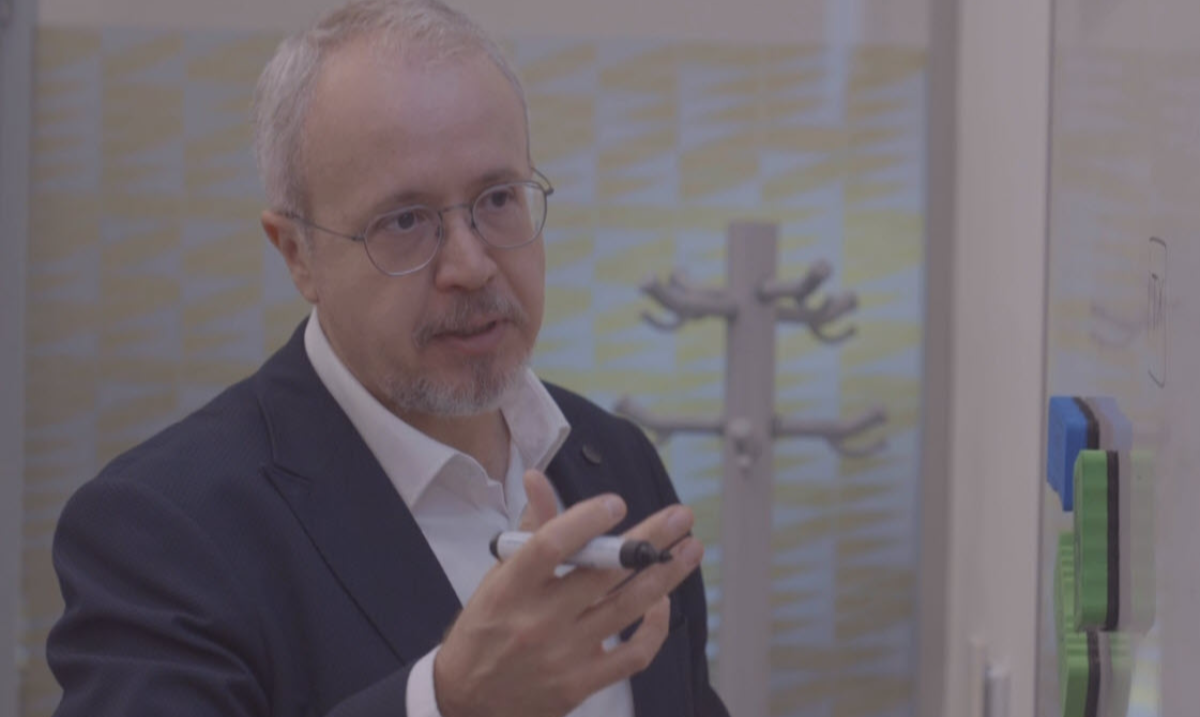Lighting the way: How Uysal’s OWC Research is Revolutionizing Wireless Communication


Picture this: you’re sitting in your living room scrolling through your phone when suddenly your Internet connection drops. Frustrated, you try to reset your router, but nothing seems to work. Well, what if we told you there is a wireless technology that is 100 times faster than Wi-Fi?
MSTF media reports
Light-based wireless communications or Li-Fi uses special LED (light-emitting diodes) light bulbs as routers and works on optical wireless communications (OWC) technology. Li-Fi devices will deliver data through visible, infrared, or ultraviolet light, unlike Wi-Fi routers, which use radio frequencies to transmit data.
According to Murat Uysal, one of the pioneering scientists in Optical Wireless Communications “Wireless technologies are one of the great success stories in the history of technology, realizing the dream of humans to communicate from anywhere at anytime.”
Murat Uysal was born in Istanbul, Turkey in 1973. He received his B.Sc. and the M.Sc. degree in electronics and communication engineering from Istanbul Technical University, Istanbul, Turkey, in 1995 and 1998, respectively. He then obtained his Ph.D. degree in electrical engineering from Texas A&M University, College Station, Texas, in 2001. Uysal began his academic career as an Assistant Professor at the University of Waterloo, Canada in 2002 and was promoted to Associate Professor in 2007. In 2011, he joined Ozyegin University, Turkey where he served as the Department Chair of Electrical and Electronics Engineering and the Founding Director of Center of Excellence in Optical Wireless Communication Technologies (OKATEM).
Uysal is currently a Full Professor and Chair of the Department of Electrical and Electronics Engineering at Ozyegin University. Uysal’s research interests are in the broad areas of communication theory and signal processing with a particular emphasis on the physical layer aspects of wireless communication systems in radio and optical frequency bands.
Murat Uysal's work on Optical Wireless Communication has significantly advanced the field, paving the way for the practical implementation of OWC in various applications. He has authored some 400 journal and conference papers on these topics and received more than 15.000 citations with an h-index of 59.
“Optical wireless communication (OWC) enables wireless connectivity using infrared, visible or ultraviolet bands. With its powerful features such as high bandwidth, low cost and operation in an unregulated spectrum, OWC can be, in some applications, a powerful alternative to and, in others, complementary to the existing wireless technologies,” Uysal writes in an article he co-published in 2014. It has great potential for producing significant and influential outcomes that could transform the wireless market, which is presently controlled by radio-frequency (RF) technologies.
Uysal’s work also focuses on Visible light communication (VLC) which refers to optical wireless communication (OWC) systems that operate within the visible band of 390-750 nm. VLC systems utilize light emitting diodes (LEDs) which can be rapidly pulsed without affecting their lighting output or causing any noticeable impact on the human eye. The use of LEDs “for illumination and communication purposes is a sustainable and energy-efficient approach and has the potential to revolutionize how we use light.”
So, next time your Internet connection drops, remember that there’s a whole world of wireless technologies out there waiting to be explored!